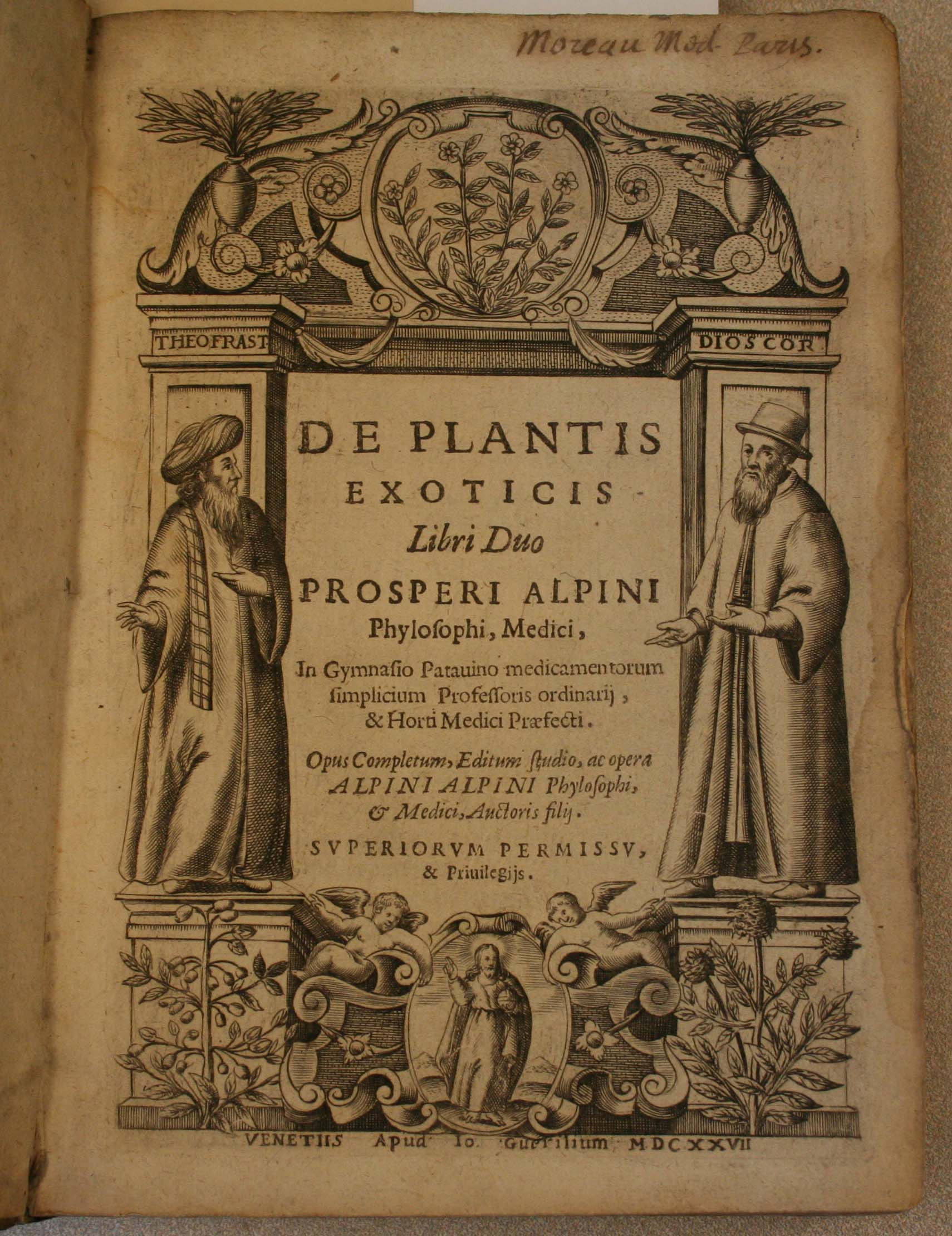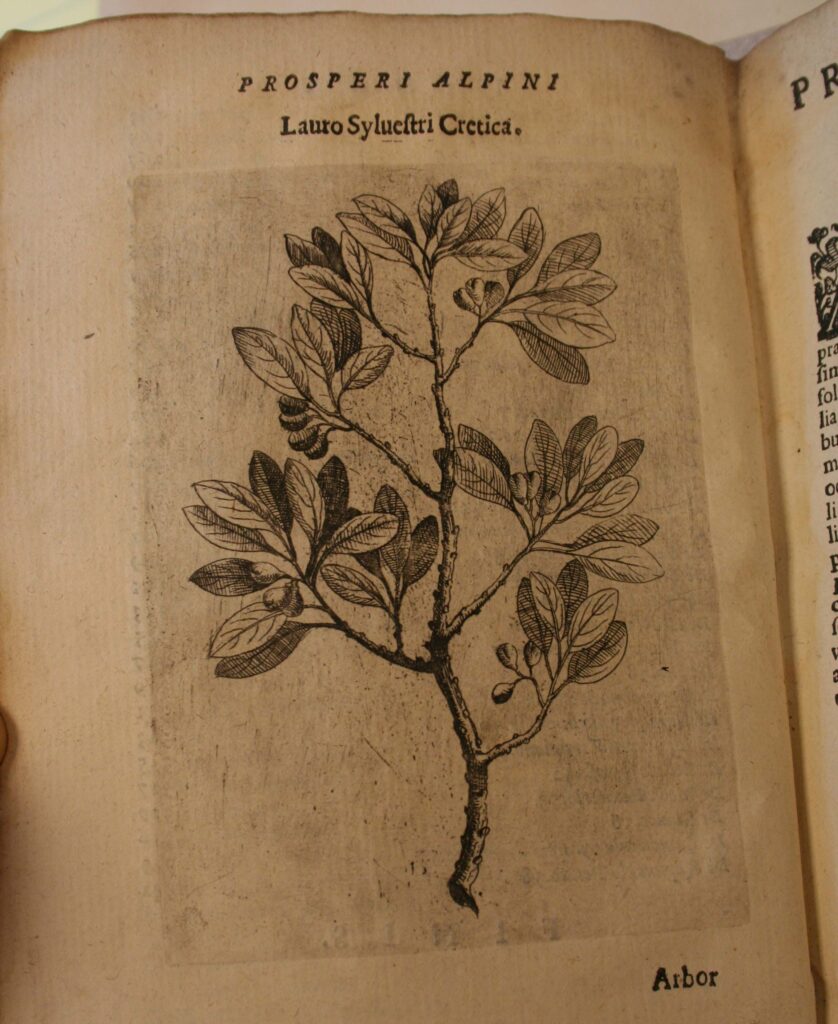One of the many volumes in the UCSF Special Collections is a first edition of De Plantis Exoticis, written by Prosper Alpini and first published in 1627. Take a look at the engraved title page below:

Alpini, Prosper, De Plantis Exoticis, title page
De Plantis Exoticis, edited posthumously by Aplini’s son, builds on an earlier work of the author’s, De Plantis Aegypti liber, 1592. Exoticis boasts 145 beautiful, full-page engravings of plants, comprising nearly half of the entire volume.

Alpini, Prosper, De Plantis Exoticis
Alpini was born in the Republic of Venice in 1553 and died at the age of 63 in 1617. During his career he was a personal physician and a professor of botany at Padua. Alpini was the first to publish descriptions of many plants that were unknown to other botanists at the time. Much of this information was gathered during his travels to Crete, other Greek islands, and Egypt.

Alpini, Prosper, De Plantis Exoticis, p. 46

Alpini, Prosper, De Plantis Exoticis, p. 124-125





